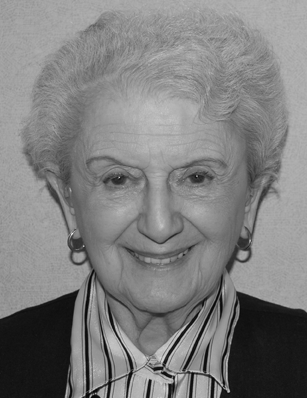Experience: Kindertransport

|

|
|
|
|
|
|
|
|
|
|
|
|
|
“Kindertransport (Children's Transport) was the informal name of a series of rescue efforts that brought thousands of refugee Jewish children to Great Britain from Nazi Germany between 1938 and 1940.
“Following the violent pogrom staged by the Nazi authorities upon Jews in Germany known as Kristallnacht (Night of Broken Glass) of 9-10 November 1938, the British government eased immigration restrictions for certain categories of Jewish refugees. Spurred by British public opinion and the persistent efforts of refuge aid committees, most notably the British Committee for the Jews of Germany and the Movement for the Care of Children from Germany, British authorities agreed to permit an unspecified number of children under the age of 17 to enter Great Britain from Germany and German-annexed territories (namely, Austria and the Czech lands).
“Private citizens or organizations had to guarantee to pay for each child's care, education, and eventual emigration from Britain. In return for this guarantee, the British government agreed to allow unaccompanied refugee children to enter the country on temporary travel visas. It was understood at the time that when the “crisis was over,” the children would return to their families. Parents or guardians could not accompany the children. The few infants included in the program were tended by other children on their transport.
“The first Kindertransport arrived in Harwich, Great Britain, on December 2, 1938, bringing some 200 children from a Jewish orphanage in Berlin which had been destroyed in the Kristallnacht pogrom. Like this convoy, most transports left by train from Berlin, Vienna, Prague, and other major cities in Central Europe. Children from smaller towns and villages traveled from their homes to these collection points in order to join the transports. Jewish organizations inside the Greater German Reich -- specifically the Reich Representation of Jews in Germany, headquartered in Berlin (and after early 1939, its successor organization the Reich Association of Jews in Germany), as well as the Jewish Community Organization (Kultusgemeinde) in Vienna -- planned the transports.
“These associations generally favored children whose emigration was urgent because their parents were in concentration or were no longer able to support them. They also gave priority to homeless children and orphans. Children chosen for a Kindertransport convoy traveled by train to ports in Belgium and the Netherlands, from where they sailed to Harwich. (At least one of the early transports left from the port of Hamburg in Germany, while some children from Czechoslovakia were flown by plane directly to Britain). The last transport from Germany left on September 1, 1939, just as World War II began, while the last transport from the Netherlands left for Britain on May 14, 1940, the day on which the Dutch army surrendered to German forces. In all, the rescue operation brought about 9,000-10,000 children, some 7,500 of them Jewish, from Germany, Austria, Czechoslovakia, and Poland to Great Britain.
“After the children's transports arrived in Harwich, those children with sponsors went to London to meet their foster families. Those children without sponsors were housed in a summer camp in Dovercourt Bay and in other facilities until individual families agreed to care for them or until hostels could be organized to care for larger groups of children. Many organizations and individuals participated in the rescue operation. Inside Britain, the Movement for the Care of Children from Germany coordinated many of the rescue efforts. Jews, Quakers, and Christians of many denominations worked together to bring refugee children to Britain. About half of the children lived with foster families. The others stayed in hostels, schools, or on farms throughout Great Britain.
“In 1940, British authorities interned as enemy aliens about 1,000 children from the children's transport program on the Isle of Man and in other internment camps in Canada and Australia. Despite their classification as enemy aliens, some of the boys from the children's transport program later joined the British army and fought in the war against Germany.
“After the war, many children from the children's transport program became citizens of Great Britain or emigrated to Israel, the United States, Canada, and Australia. Most of these children would never again see their parents, who were murdered during the Holocaust.”
Accessed on July 20, 2011
— Wide World Photo
http://www.ushmm.org/wlc/en/media_ph.php?ModuleId=10005260&MediaId=850
http://www.ushmm.org/wlc/en/media_ph.php?ModuleId=10005260&MediaId=850
Accessed on July 20, 2011
— Institute of Contemporary History and Wiener Library Limited
http://www.ushmm.org/wlc/en/media_ph.php?ModuleId=10005260&MediaId=818
http://www.ushmm.org/wlc/en/media_ph.php?ModuleId=10005260&MediaId=818
Accessed on July 20, 2011
— Bibliotheque Historique de la Ville de Pari
http://www.ushmm.org/wlc/en/media_ph.php?ModuleId=10005260&MediaId=849
Accessed on July 20, 2011
— Institute of Contemporary History and Wiener Library Limited
http://www.ushmm.org/wlc/en/media_ph.php?ModuleId=10005260&MediaId=607
http://www.ushmm.org/wlc/en/media_ph.php?ModuleId=10005260&MediaId=607
Accessed on July 20, 2011
“Peter, Eva, and Stephen Kollisch were sent by their parents on a Kindertransport from Vienna to England in July 1939. They stayed with a Quaker family, Ashford and Mary Moar, and Mary's sister, Mrs. Baker, in Bristol for six months before receiving their immigration papers for the U.S. Upon their arrival in the United States in March 1940 the Kollisch siblings were reunited with their parents, who had fled Vienna in the fall of 1939.”
United States Holocaust Memorial Museum.
Photo Archives.
http://digitalassets.ushmm.org/photoarchives/detail.aspx?id=1040079&search=safe+houses&index=3
Photo Archives.
http://digitalassets.ushmm.org/photoarchives/detail.aspx?id=1040079&search=safe+houses&index=3
Accessed on 6/11/11.
Contact us
thank you!
Your application is successfuly submited. We will contact you as soon as possible
thank you!
Your application is successfuly submited. Check your inbox for future updates.